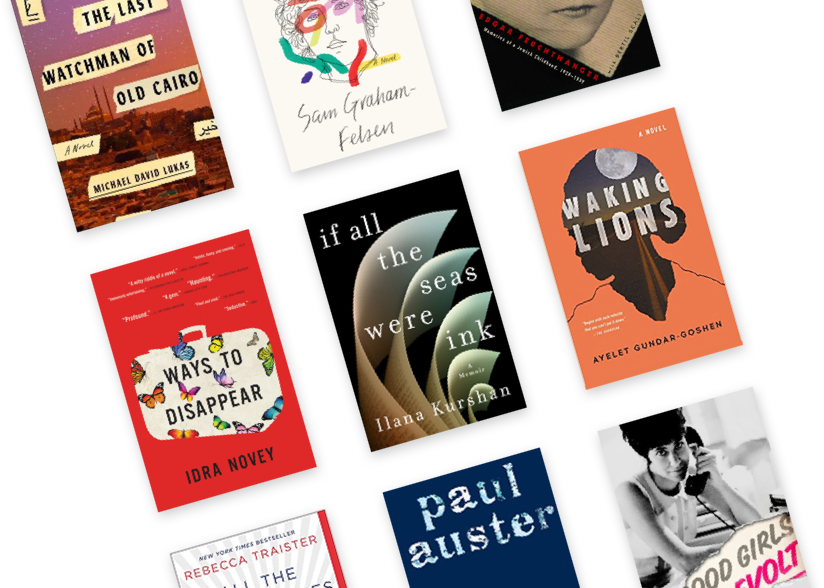The Passover seder is a ritual deeply imbued with meaning. Yet, for children, it can seem interminable. Author Dara Horn and illustrator Theo Ellsworth have expanded on that truth, and several others central to Jewish history, in a graphic novel that both subverts and celebrates elements of the festival. The title refers to the song Had Gadya, frequently sung near the end of the long evening. The goat of the traditional song is a hapless animal caught in a chain of events, but here he becomes a guide to the child’s exploration of his own identity, as well as the meaning of Jewish peoplehood.
At the opening of One Little Goat, frenetic activity characterizes a family’s holiday. The oldest son describes it with understatement: “All this makes Passover feel kind of tense.” Young readers will identify with his stress, and also become engaged in a narrative where family drama is transformed into a series of fantastic encounters. Horn carefully calibrates an ironic tone with an underlying depth of respect. Older family members are loved, but are also annoying figures with puzzling qualities that the son will eventually come to understand. His father’s irritating enthusiasm, his grandfather’s impatience, and his great grandmother’s constant refrain of “you’re doing it wrong,” gradually come into focus as points of empathy. The four sons of the seder are each assigned a specific trait, as allegories of Jewish responses to the Exodus story, but the protagonist learns how applying these qualities literally to his siblings is utterly misleading.
When the protagonist’s youngest sibling misplaces the afikoman, Horn introduces the possibility that the seder might never conclude if the afikoman isn’t retrieved. An immersive voyage through Jewish history ensues. Caught in a kind of time warp with a wise goat as his guide, the son interacts with a range of people and places from the past. There is nothing random in Horn’s choices, which reflect both her erudition and her sensitivity to the crucial concept of Am Yisrael (the Jewish people). The argument between third-century rabbis Rav and Shmuel compares the kinds of liberation embodied in the Exodus. The incredible heroism of Doña Gracia Nasi in rescuing Jews from the Inquisition is a source of wonder, and the Warsaw Ghetto uprising a tragic counterpart in an endless series of responses to deadly oppression. Sigmund Freud’s absence from his own family’s seder is just as significant a part of a vast cultural tapestry. (It also allows Horn to have Freud’s mother complain, “he never calls, he never writes.”) There is even an excursion into the story of the famous Bird’s Head Haggadah, which was created in fourteenth-century Central Europe.
Ellsworth’s black-and-white drawings, imbued with the edginess of underground comics, convey the essence of the book’s message. His caricatures of people never devolve into mockery, and Horn’s central concept of the potentially endless seder takes shape in his images. The most grotesque facial expressions, of fear, surprise, and frustration, are dramatic, but not gratuitous. Cross-hatching and intricate detail demand, and reward, the reader’s attention.
Images of tunnels, doors, and clouds are literal and metaphorical at the same time. When a partly invisible Elijah ultimately shows up, he is composed of pixel-like dots that partly blend into the door meant to welcome him. Like the Haggadah itself, the narrative and visual richness of this highly recommended, inventive graphic novel invites repeated readings, each one perhaps different from all the others.
Emily Schneider writes about literature, feminism, and culture for Tablet, The Forward, The Horn Book, and other publications, and writes about children’s books on her blog. She has a Ph.D. in Romance Languages and Literatures.

